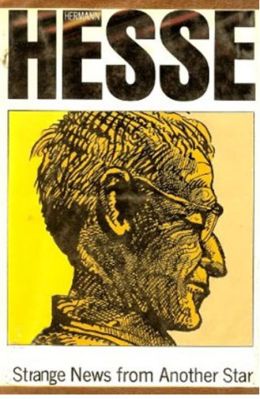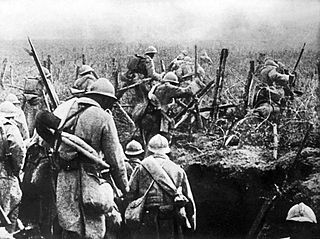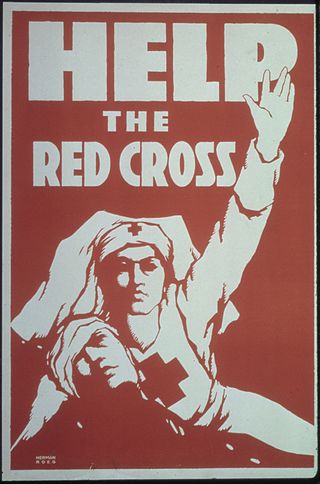
Hermann Karl Hesse was a German-Swiss poet, novelist, and painter. His best-known works include Demian, Steppenwolf, Siddhartha, and The Glass Bead Game, each of which explores an individual's search for authenticity, self-knowledge, and spirituality. In 1946, he received the Nobel Prize in Literature.

Maximilian, Margrave of Baden, also known as Max von Baden, was a German prince, general, and politician. He was heir presumptive to the throne of the Grand Duchy of Baden, and in October and November 1918 briefly served as the last chancellor of the German Empire and minister-president of Prussia. He sued for peace on Germany's behalf at the end of World War I based on U.S. President Woodrow Wilson's Fourteen Points and took steps towards transforming the government into a parliamentary system. As the German Revolution of 1918–1919 spread, he handed over the office of chancellor to SPD Chairman Friedrich Ebert and unilaterally proclaimed the abdication of Emperor Wilhelm II. Both events took place on 9 November 1918, marking the beginning of the Weimar Republic.

Pope Benedict XV, born Giacomo Paolo Giovanni Battista della Chiesa, was head of the Catholic Church from 1914 until his death in January 1922. His pontificate was largely overshadowed by World War I and its political, social, and humanitarian consequences in Europe.

Theobald Theodor Friedrich Alfred von Bethmann Hollweg was a German politician who was Chancellor of the German Empire from 1909 to 1917. He oversaw the German entry into World War I and played a key role during its first three years. He was replaced as chancellor in July 1917 due in large part to opposition to his moderate policies by leaders in the military.

The Fairy Tales of Hermann Hesse is a collection of 22 fairy tales written by Hermann Hesse between the years of 1904 and 1918 and translated by Jack Zipes. A list of the individual fairy tales and the year in which they were written follows. This collection was published in 1995 and is the first English translation for most of the tales.

Henry Noel Brailsford was a British journalist and writer, considered one of the most prolific left-wing journalists of the first half of the 20th century. A founding member of the Men's League for Women's Suffrage in 1907, he resigned from his job at The Daily News in 1909 when it supported the force-feeding of suffragettes on hunger strike.

Ottokar Theobald Otto Maria Graf Czernin von und zu Chudenitz was an Austro-Hungarian diplomat and politician during the time of World War I, notably serving as Foreign Minister from 1916 to 1918.

Strange News from Another Star is a collection of eight short stories written by the German author Hermann Hesse between 1913 and 1918. It was first published as Märchen in German in 1919 and was translated to English by Denver Lindley in 1972. The first English publication was in 1972.

My Belief: Essays on Life and Art is a collection of essays by Hermann Hesse. The essays, written between 1904 and 1961, were originally published in German, either individually or in various collections between 1951 and 1973. This collection in English was first published in 1974, edited by Theodore Ziolkowski.

The Entente, or the Allies, were an international military coalition of countries led by France, the United Kingdom, Russia, the United States, Italy, and Japan against the Central Powers of Germany, Austria-Hungary, the Ottoman Empire, and Bulgaria in World War I (1914–1918).

World War I or the First World War was a global conflict between two coalitions: the Allies and the Central Powers. Fighting took place throughout Europe, the Middle East, Africa, the Pacific, and parts of Asia. One of the deadliest wars in history, it resulted in an estimated 9 million soldiers dead and 23 million wounded, plus up to 8 million civilian deaths from numerous causes including genocide. The movement of large numbers of troops and civilians during the war was a major factor in spreading the 1918 Spanish flu pandemic.
The 56th Infantry Division was a division of the Imperial German Army. It was formed during World War I and dissolved with the demobilization of the German Army in 1919.
The 21st Reserve Division was a unit of the Imperial German Army in World War I. The division was formed on mobilization of the German Army in August 1914 as part of XVIII Reserve Corps. The division was disbanded in 1919 during the demobilization of the German Army after World War I. The division was raised primarily in the Prussian Province of Hesse-Nassau, but one battalion of the 88th Reserve Infantry Regiment came from the Grand Duchy of Hesse and some other troops of the division came from Westphalia and the Rhine Province.
The 48th Reserve Division was a unit of the Imperial German Army in World War I. The division was formed in September 1914 and organized over the next month, arriving in the line in October. It was part of the first wave of new divisions formed at the outset of World War I, which were numbered the 43rd through 54th Reserve Divisions. The division was part of XXIV Reserve Corps. It was disbanded in 1919 during the demobilization of the German Army after World War I.
The 51st Reserve Division was a unit of the Imperial German Army in World War I. The division was formed in September 1914 and organized over the next month, arriving in the line in October. It was part of the first wave of new divisions formed at the outset of World War I, which were numbered the 43rd through 54th Reserve Divisions. The division was initially part of XXVI Reserve Corps. It was disbanded in 1919 during the demobilization of the German Army after World War I.
The 75th Reserve Division was a unit of the Imperial German Army in World War I. The division was formed at the end of December 1914 and organized over the next month, arriving in the line in early February 1915. It was part of the second large wave of new divisions formed at the outset of World War I, which were numbered the 75th through 82nd Reserve Divisions. The division was initially part of XXXVIII Reserve Corps. The division was disbanded in 1919 during the demobilization of the German Army after World War I. The division was primarily raised in the XIV Corps area and the XI Corps area.

The 10th Ersatz Division was a unit of the German Army in World War I. The division was formed on the mobilization of the German Army in August 1914. The division was disbanded in 1919 during the demobilization of the German Army after World War I.
"Second Thirty Years' War" is a periodization scheme sometimes used to encompass the wars in Europe from 1914 to 1945. Just as the Thirty Years' War of 1618 to 1648 was not a single war but a series of conflicts in varied times and locations, later organized and named by historians into a single period, the Second Thirty Years' War has been seen as a "European Civil War", fought over the problem of Germany and exacerbated by the new ideologies of fascism, Nazism and communism that came into power after World War I. The thesis of the Second Thirty Years' War is that World War I naturally led to World War II; in this framework, the latter is the inevitable result of the former, and thus they can be seen as a single conflict. Historians have criticized this thesis on the grounds that it excuses the actions of fascist and Nazi historical actors.

The home front during World War I covers the domestic, economic, social and political histories of countries involved in that conflict. It covers the mobilization of armed forces and war supplies, lives of others, but does not include the military history. For nonmilitary interactions among the major players see diplomatic history of World War I.
The diplomatic history of World War I covers the non-military interactions among the major players during World War I. For the domestic histories of participants see home front during World War I. For a longer-term perspective see international relations (1814–1919) and causes of World War I. For the following (post-war) era see international relations (1919–1939). The major "Allies" grouping included Great Britain and its empire, France, Russia, Italy and the United States. Opposing the Allies, the major Central Powers included Germany, Austria-Hungary, the Ottoman Empire (Turkey) and Bulgaria. Other countries also joined the Allies. For a detailed chronology see timeline of World War I.












